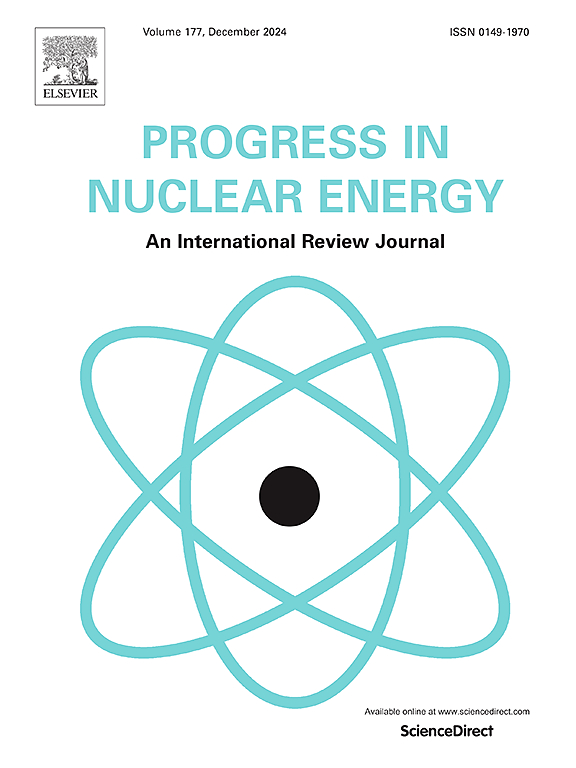Upgrading the compressive strength and radiation shielding properties of high strength concrete supported with nano additives of lead monoxide and granodiorite
IF 3.3
3区 工程技术
Q1 NUCLEAR SCIENCE & TECHNOLOGY
引用次数: 0
Abstract
The current study aims to enhance several properties of high-strength concrete (HSC) by incorporating two distinctly classified and inherently different nanomaterials into the concrete matrix ingredients. Nano-lead monoxide (NL), known for its high density and radiation attenuation capability, and nano granodiorite powder (NG), as a promising supplementary cementitious material (SCM) with pozzolanic activity ,were individually investigated at increasing replacement ratios of cement weight up to 5%. Additionally, an optimized mix containing the optimal replacement ratios of both materials was designed to maximize the concrete shielding capacity against radiation penetration. The NL/NG concrete was analyzed using XRF, XRD, SEM, and EDX techniques. The radiation shielding assessment of the examined NL/NG-concrete mixes were evaluated using the Monte-Carlo simulation and Phy-X software. Results showed the ability of NG to improve the compressive strength of HSC, where the optimum replacement ratio was 4%, with an increase of 17.3% compared to the control mix. This improvement was at lower rates in the case of NL, where a 3% replacement ratio resulted in a 7.96% increase in compressive strength before the strength value declined at higher replacement ratios. For the other properties, increasing the replacement ratio of NL in the concrete mix leads to a delay in setting times and an increase in workability, accompanied by a decrease in consistency. On the other side, the incorporation of NG into the concrete exhibited the opposite effect on all the properties above. The combined mix of 5%NL+4%NG led to an 11.7% enhancement in the compressive strength value with improved overall concrete performance, especially its radiation shielding property. The studied NL/NG-concrete samples provide the best protection against γ-rays. Lastly, the excellent performance of the mixes of NL and NG on HSC would pave the way for their employment as radiation shielding in various nuclear and medical facilities.
求助全文
约1分钟内获得全文
求助全文
来源期刊

Progress in Nuclear Energy
工程技术-核科学技术
CiteScore
5.30
自引率
14.80%
发文量
331
审稿时长
3.5 months
期刊介绍:
Progress in Nuclear Energy is an international review journal covering all aspects of nuclear science and engineering. In keeping with the maturity of nuclear power, articles on safety, siting and environmental problems are encouraged, as are those associated with economics and fuel management. However, basic physics and engineering will remain an important aspect of the editorial policy. Articles published are either of a review nature or present new material in more depth. They are aimed at researchers and technically-oriented managers working in the nuclear energy field.
Please note the following:
1) PNE seeks high quality research papers which are medium to long in length. Short research papers should be submitted to the journal Annals in Nuclear Energy.
2) PNE reserves the right to reject papers which are based solely on routine application of computer codes used to produce reactor designs or explain existing reactor phenomena. Such papers, although worthy, are best left as laboratory reports whereas Progress in Nuclear Energy seeks papers of originality, which are archival in nature, in the fields of mathematical and experimental nuclear technology, including fission, fusion (blanket physics, radiation damage), safety, materials aspects, economics, etc.
3) Review papers, which may occasionally be invited, are particularly sought by the journal in these fields.
 求助内容:
求助内容: 应助结果提醒方式:
应助结果提醒方式:


